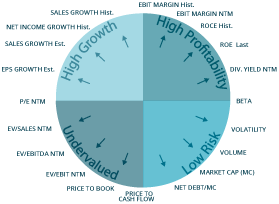Did you know ?
Infront Analytics' Beta calculator allows you to define your input parameters for custom beta calculations.
The beta calculator offers additional flexibility, such as:
- Reference index: apply the same reference index for all companies in your list regardless of their country.
- Sampling frequency: choose between a weekly or a monthly sampling frequency for the closing prices.
- Debt for unlevered beta: choose the type of debt to be used for unlevered beta calculations.
- Additional beta statistics: calculate R-squared and T-value.

 South Korea
South Korea Factsheet
Factsheet